Help! The Lighter Side of a Film and a Journey
The Beatles didn’t only change popular music, they took us on adventures too
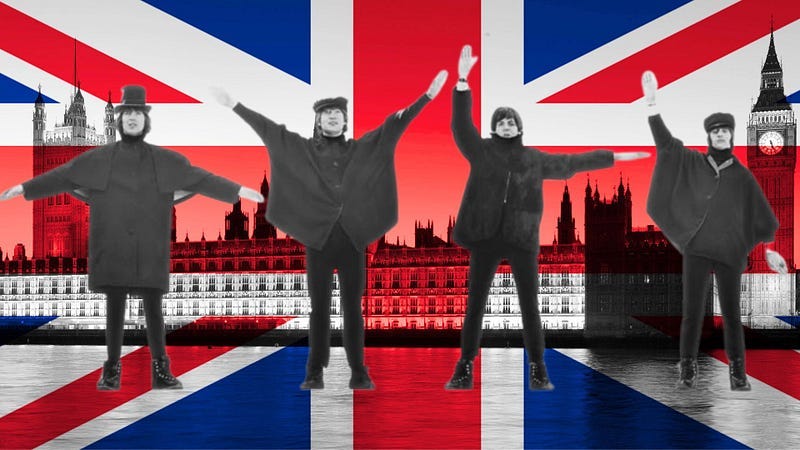
Who do those Beatle boys think they are? They need a good haircut. Yeah, yeah, yeah? They can’t even speak the Queen’s English.
It’s easy to forget the social attitudes in Britain at the start of the sixties — class structure and lack of social mobility were embedded. But things were changing, and The Beatles were leading the charge. Their big UK moment came four months before the Ed Sullivan appearance.
The boys were at the Royal Variety Performance in London on 4th November 1963 in front of an audience of 1,200, including the Queen Mother and Princess Margaret, and millions more on TV. Just before their final song, John asked those in the “cheap seats” to clap along. He looked up at the royal box and added, “The rest of you can rattle your jewellery.”
The band’s astonishing performance that evening, and Lennon’s amusing but biting social comment, were the beginning of all-out Beatlemania in the UK.
The Beatles were irreverent, charismatic, intelligent and talented, and their influence was becoming larger than just music.
(This is one half of a two-part analysis of Help! written in collaboration with Daniel Van Auken. See the link at the end of this article.)
When I was younger, so much younger than today
18 months later, at the end of July 1965, I asked my dad if he would take me to the cinema to see the new Beatles film, Help! My mum looked at me like she’d been sucking on a lemon seasoned with jalapeno pepper.
My parents were working class, and they knew their place in British society. Unlike those awful Beatle boys giving their son improper ideas — travel, fun, music, wealth? What was the world coming to?
I spotted a moment of horror in my dad’s eyes as he remembered taking me to see A Hard Day’s Night. His face softened, and he said, “Yes, of course, son.”
He checked my mum wasn’t looking and winked at me. We went the next day.
Help! opened up the doors
I couldn’t afford singles at eight years old, and my parents weren’t going to ‘waste money’ on pop music. My only option was to listen for Help! on the radio and TV.
I’d listen to the radio every free moment after school and weekends, waiting for Help! to be played, and scour the TV listings of each of the three channels for Beatles appearances.
Help! was the Beatles' formula on overdrive, but something was different. This was no Hard Day’s Night when “everything seemed to be right”. Help!’s lyrics were different; it wasn't a simple love song, there was a darker side, something Daniel Van Auken explores in his companion article:
“If we look through the haze surrounding this often-ignored album, it becomes clear: Help! isn’t a soundtrack at all. It’s the musical score to a real-life drama far more compelling than the movie’s plot.”
The dark Help! album and the lighter Help! film were a bridge between the lovable mop-tops and a deeper, darker avant-garde Beatles.
Life changed in oh so many ways
The Help! movie followed the monumental success of A Hard Day’s Night (AHDN).
I never told my dad, but coming out of the cinema on that July evening in ’65, I didn't think Help! was as good as AHDN, and the soundtrack wasn’t so much fun.
Like AHDN, Help! had The Beatles playing themselves. However, instead of a day in the life of Beatlemania, Help! had a plot of sorts — a murderous Indian cult needs to steal one of Ringo’s rings for a sacrificial ceremony.
The inspirations for the film passed over the head of the eight-year-old me, but I now know they were The Marx Brothers and The Goons, as well as being a comical satire on James Bond.
Help! was shot in the UK but also in the Bahamas and Austria, which didn’t work for the tenuous storyline. It did work to see that these locations were not out of reach. If John Lennon from Liverpool, England could do it, so could I.
The smoke-filled studio scene where they played You’re Going To Lose That Girl was pretty good, but it felt staged and didn’t match the brilliant studio scene for If I Fell in AHDN, where Lennon sings to Ringo.
And no scene came close to the opening of A Hard Day’s Night when the band launch into I Should Have Known Better in the mail carriage. Cinema magic.
A Hard Day’s Night is a regular on the hundreds of TV channels in the UK these days, but you’ll rarely find Help!, if at all. It’s not a bad film, but it’s of its time and a little hit-and-miss.
But now those days are gone
I’m no longer eight years old, and I now own the Help! album, although it wasn’t until the 80s, unlike their others. And when I suggest to Mrs M we wander around London following in the Beatles’ Help! London footsteps, she doesn’t pull a face like she’s sucking on a lemon with jalapeno pepper.
We don’t bother to follow the sequence of the film because, honestly, it doesn’t make any difference to the plot.
The Indian Restaurant scene
For reasons that aren’t obvious, the Beatles go to the ‘Rajahama’ Indian restaurant in the West End of London.
We wander down Baker Street from the tube station and pass the former Apple Boutique.
We turn left into Blandford Street, where the Indian restaurant scene was filmed 60 years ago.
Here we meet Mrs M’s friend Anna, who joins us on the tour. Anna lives on the same riverside walk as the pub in a later scene. She didn’t know this until I told her, but I suppose there aren’t too many people who would know the location of a ten-minute scene in a rarely shown film shot 60 years ago.
Today, the ‘Rajahama’ is an upmarket French restaurant. The street otherwise looks remarkably similar to when the Beatles filmed there.
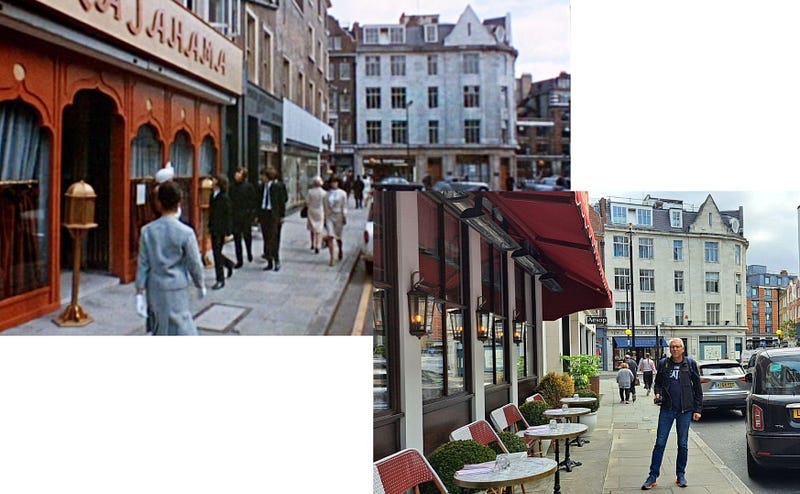
The Beatles chat to one of the Indian waiters outside the restaurant. The joke (?) was that he was a Cockney pretending to be Indian. My dad, also a Cockney, perked up at that point back in 1965 before he looked at his watch, checked I was OK, and closed his eyes again.

The jewellery shop scene
The Beatles go to Aspreys in New Bond Street to get the ring cut off Ringo’s finger.
We arrive at New Bond Street to find the former Aspreys building at 167 to 169 undergoing renovation. Only the white metal detail above the windows is visible from when The Beatles filmed there.
Remarkably, much of the original facade remains at 165, although it’s now a Givenchy shop. We shoot the next scene there instead.
Artistic licence.

The sect in a phone box scene
The phone box scene is set outside a building doubling as Scotland Yard. The inside scenes with the Beatles and Police Inspector Gluck were filmed at Twickenham Studios.
Cult leader Clang calls Gluck from the phone box and asks to speak to Ringo. When McCartney says it’s strange because “no one knows we’re here,” Harrison pipes up, “I know we’re here.” Marx Brothers stuff.

There are now two phone boxes on the site, and the tree has grown, obscuring Big Ben.
I pose where Leo McKern, as Clang the hapless Bond-type supervillain, was when he called Gluck.
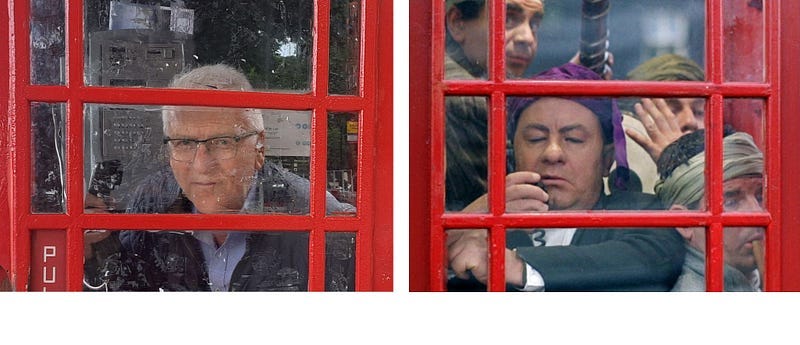
The house with four doors scene
We cross Waterloo Bridge and head for Waterloo Station, the area portrayed in The Kinks’ classic Waterloo Sunset.
We take a short train journey to Twickenham, in South-West London, the location of Twickenham Studios. They remain a working studios and are not open to the public.
Our first stop is Ailsa Avenue, where the Beatles arrive in a limousine.
The Boys get out of their limo in front of houses 5 to 11 and enter the separate doors. Inside, it’s one big place and filmed in the studios.

Lennon’s door was №7. Here’s the now and then comparison.

The tell your weight scene
We walk ten minutes to Winchester Road. Ringo wants to know his weight — did I say the plot was nonsense? A cult member hidden inside a weight machine tries to remove his ring.
The machine was placed outside the Tuck Shop, which is now a private house. The only reference is a name plate to the right of the front door and placed high to deter Beatle trophy hunters.
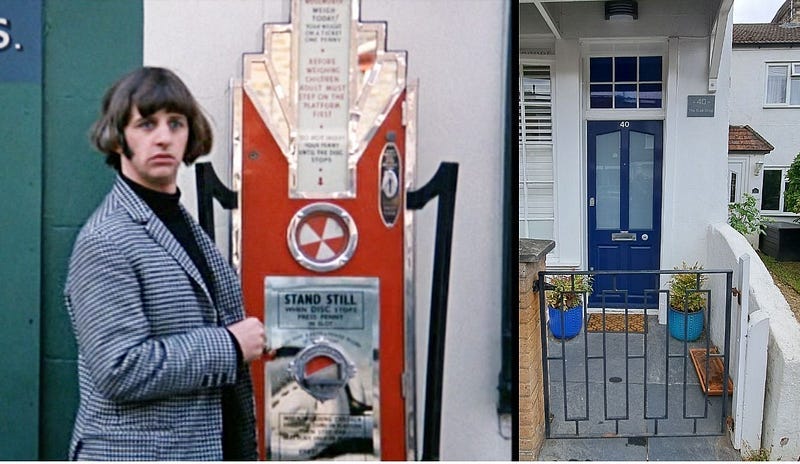
The fake post box scene
One of the cult next tries to remove Ringo’s ring by hiding in a fake post box. This scene was shot a minute’s walk from the previous location.
The problems with doing this all from memory are exposed in these photos — I knew Ringo was left-handed, so I posed with my left hand. Whoops, he used his right.
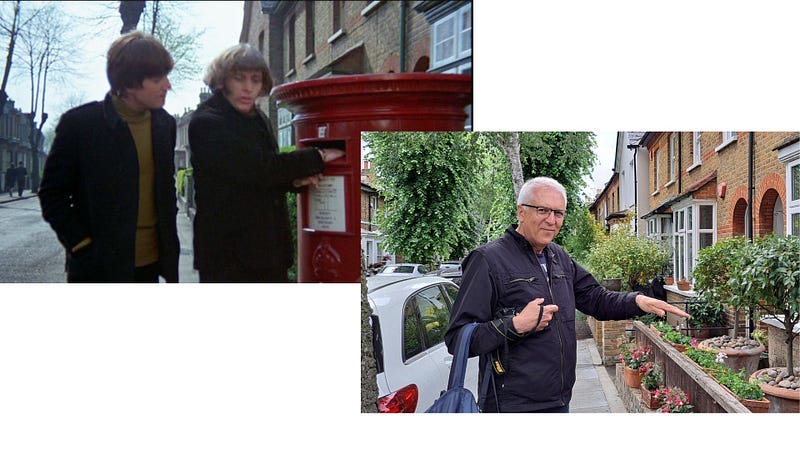
The pub scenes
We hop back on the train and head to Kew Bridge station for the final shots of the day.
We wander along the magnificently named Strand-On-The-Green, a Thames riverside path. The street sign is on a ten-foot-high pole, also to deter Beatle trophy hunters.
We pass Anna’s house on the way to The City Barge pub.
We stop at Post Office Alley from where John and Paul emerge.
The alley sign has long since disappeared and replaced by a sign on another ten-foot-high pole to stop those damn Beatle trophy hunters who probably nicked the original.

After leaving the alley, The Beatles encounter a Scottish marching band, who are the cult cunningly disguised.
We’ll put aside the question of why a Scottish marching band would be a good disguise on a London riverside walk— Marx Brothers/Goons surrealistic comedy, I guess.
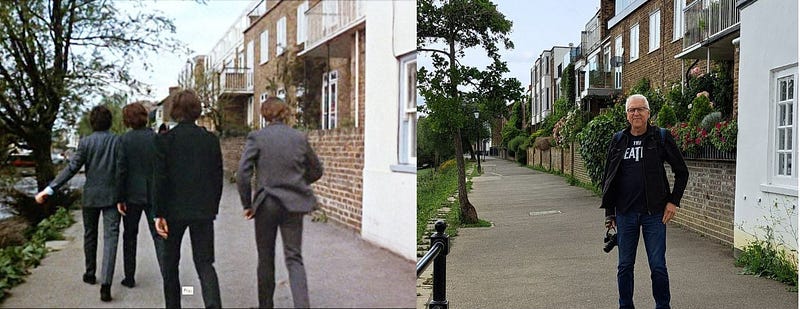
The boys escape and run into the City Barge pub.

The pub is no longer the same inside as it was in 1965, and even if it were, the internal pub scenes were shot at Twickenham studios.
Ringo orders two lagers and lime, and two lagers and lime. This was a common drink in the sixties for reasons I cannot explain.
In the interests of movie authenticity, I had a beer in the City Barge, but chose an IPA instead. The Beatles may have influenced my musical and social attitudes, but you can only take these things so far.
The pub manager showed me a screenshot of a replica image of the Beatles' signatures on a City Barge invoice from when they filmed there. The replica is hanging in his office.
He told me they were hosting a 60th anniversary celebration of Help! on 2nd August with a showing of the film plus a Beatles cover band.
Am I going, you might ask?
My Dad would have known the answer to that one.
This article is one half of a two-piece analysis on the impact of Help! as an album and film written in collaboration with Daniel Van Auken. Head over to Daniel’s piece now to read about the darker side of Help!





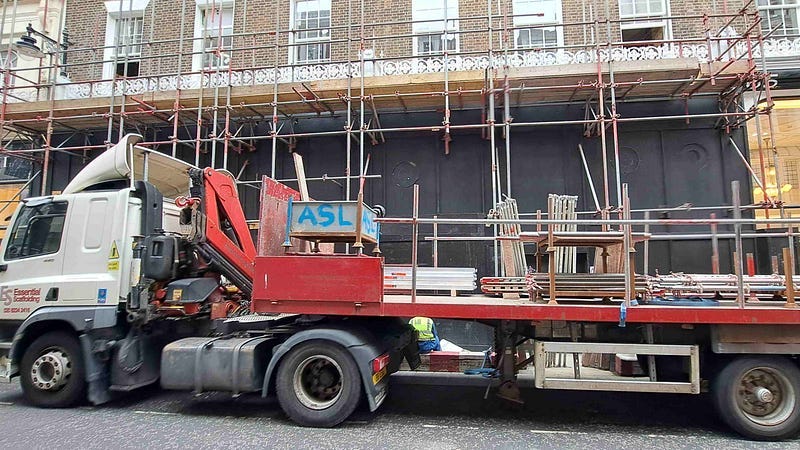

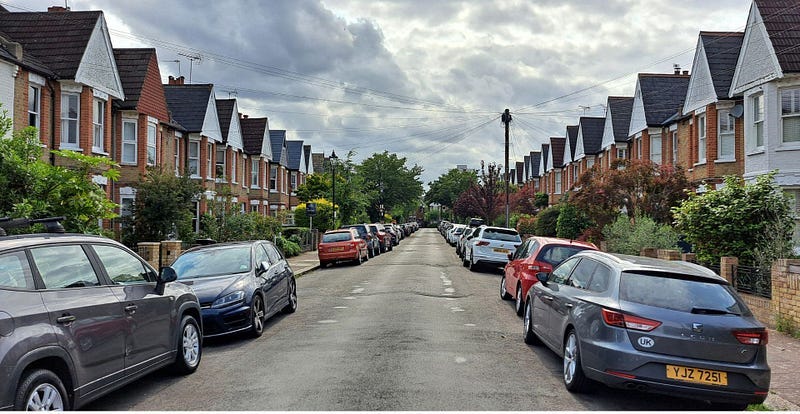

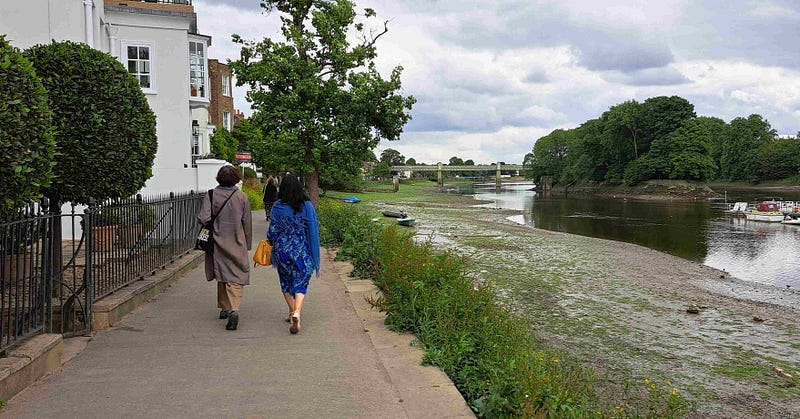
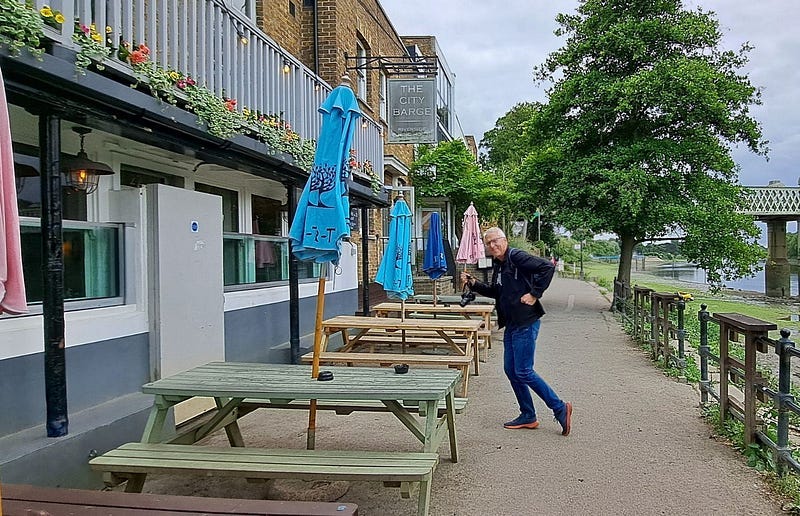
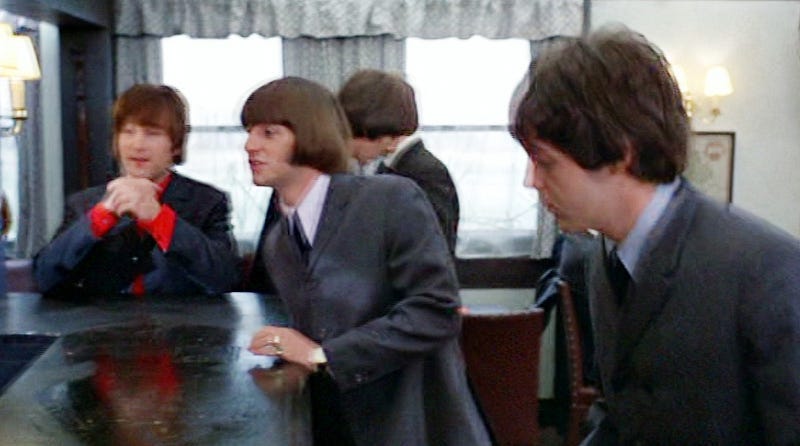
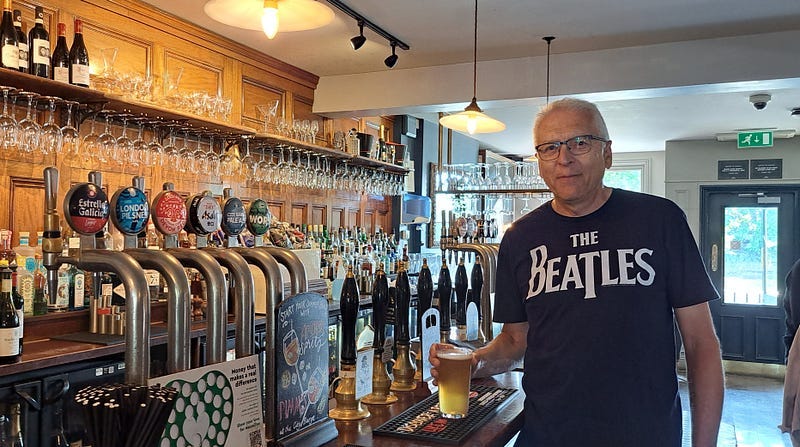



Alex, the collaboration was a blast. You're not only a fantastic writer but also a talented photographer and all-around historian. Excellent work, my friend.
Mindblowing detail as always, Alex. I have to admit, it's quite a long time since I've seen Help! Perhaps it's time to give it another look.